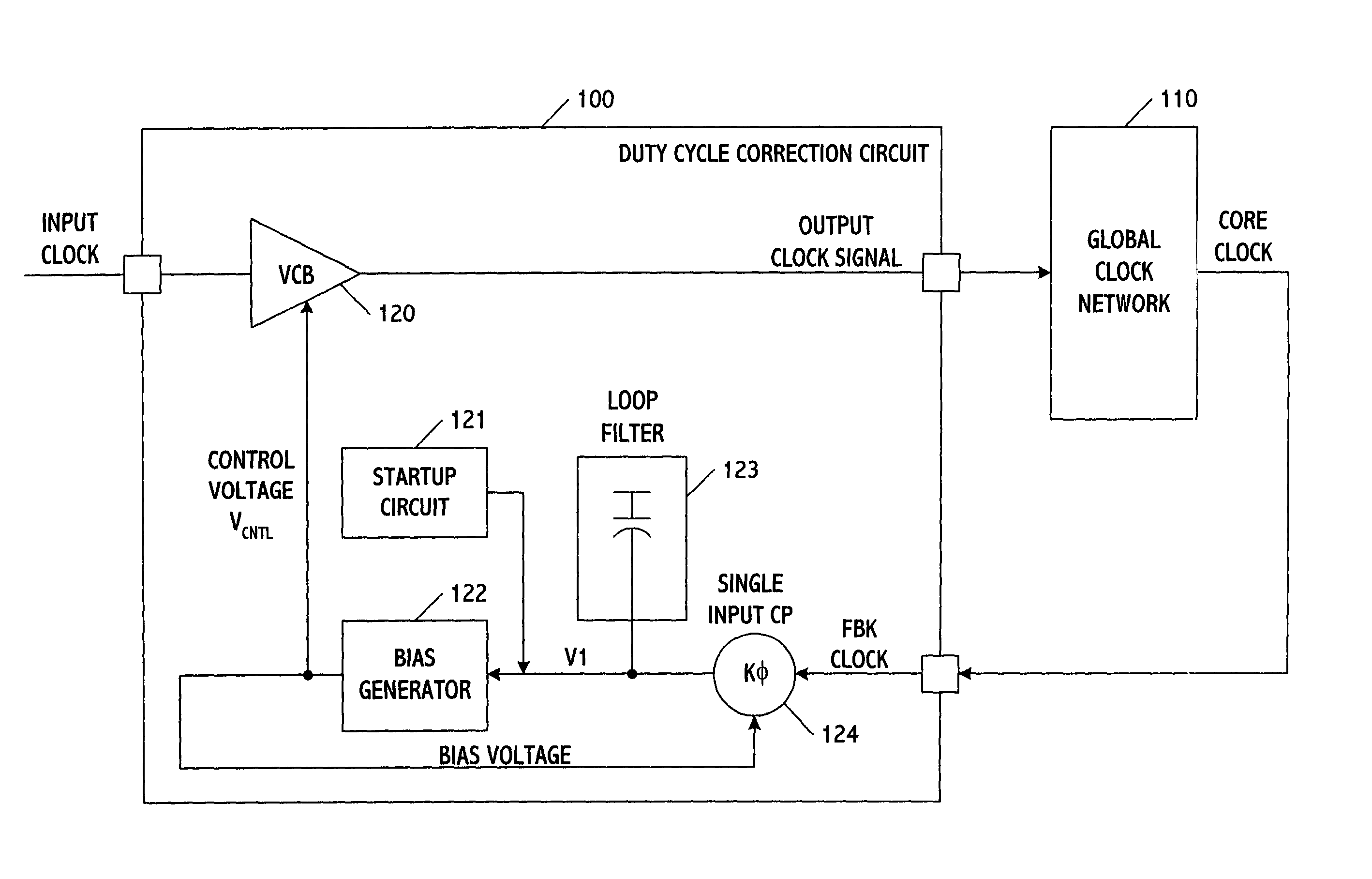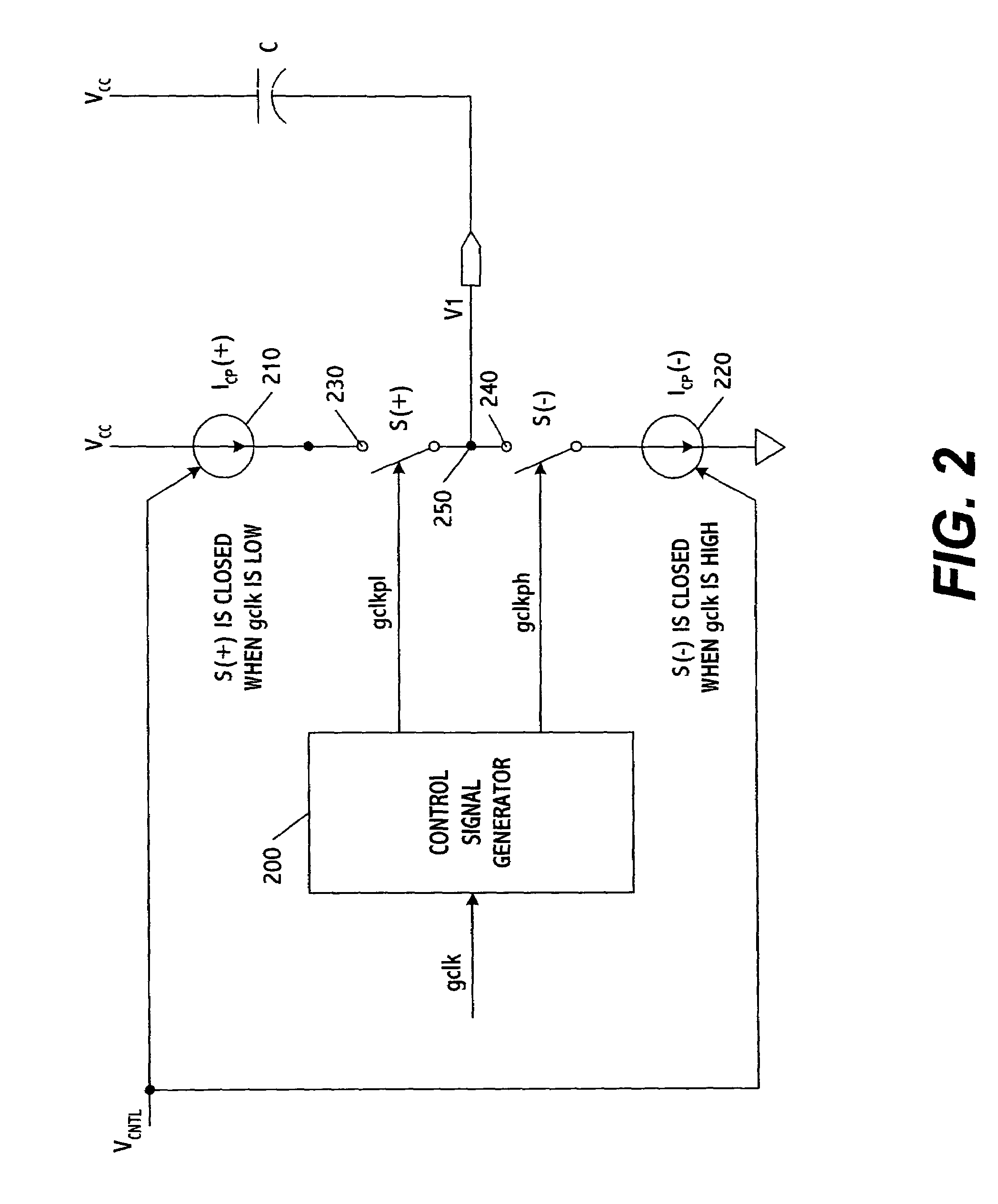High-accuracy continuous duty-cycle correction circuit
a duty-cycle correction and high-accuracy technology, applied in the field of processing signals, can solve problems such as phase-path failure, core clock duty-cycle distortion, and increase the sensitivity of the maximum operating frequency of the cpu
- Summary
- Abstract
- Description
- Claims
- Application Information
AI Technical Summary
Benefits of technology
Problems solved by technology
Method used
Image
Examples
Embodiment Construction
[0016]FIG. 1 shows a duty-cycle correction loop according to one embodiment of the present invention. The loop includes a duty-cycle correction circuit 100 and a global clock network 110. The duty-cycle correction circuit includes a voltage-controlled buffer (VCB) 120, a startup circuit 121, and a bias generator 122 as well as a loop filter 123 and a single-input charge pump (CP) 124. Using these elements, the duty-cycle correction circuit generates a corrected output clock signal from an input clock signal.
[0017]The global clock network distributes the signal output from the correction circuit to other circuits. This may be accomplished using one or more buffers which control the timing and distribution of the correction circuit signal. The global clock network may therefore be considered a distribution network (i.e., one that takes the clock signal output from the correction circuit and merely distributes where needed), as opposed to one which changes the frequency of the clock si...
PUM
| Property | Measurement | Unit |
|---|---|---|
| clock frequency | aaaaa | aaaaa |
| clock frequency | aaaaa | aaaaa |
| voltage | aaaaa | aaaaa |
Abstract
Description
Claims
Application Information
 Login to View More
Login to View More - R&D
- Intellectual Property
- Life Sciences
- Materials
- Tech Scout
- Unparalleled Data Quality
- Higher Quality Content
- 60% Fewer Hallucinations
Browse by: Latest US Patents, China's latest patents, Technical Efficacy Thesaurus, Application Domain, Technology Topic, Popular Technical Reports.
© 2025 PatSnap. All rights reserved.Legal|Privacy policy|Modern Slavery Act Transparency Statement|Sitemap|About US| Contact US: help@patsnap.com



